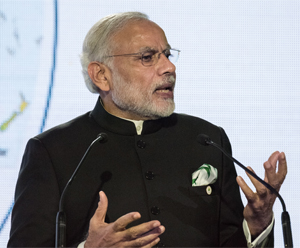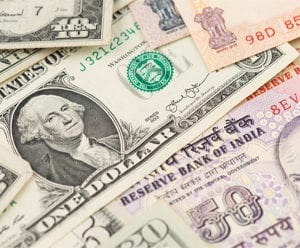
Can Germany and India become major trade partners?

Bilateral trade between Germany and India has been on an upswing in recent years as both countries seek to boost their economic and strategic partnership to mitigate the trade war impact.
In November 2019, Chancellor of Germany Angela Merkel met with Prime Minister of India Narendra Modi in New Delhi to sign trade agreements on products involving artificial intelligence, cybersecurity, and climate change, among other things. The pair also discussed investment, foreign policy, and security issues between the two countries.
These talks — the fifth in a series of biennial bilateral summits — are the latest efforts to strengthen Indo-German trade relations and forge firmer business bonds. Bilateral trade totaled US$21.9 billion (€19.6 billion) in the 2017–18 financial year, an increase of 17 percent from the previous year.
Merkel’s visit takes on added significance as both countries are seeking ways to offset the damage caused by the trade dispute between the United States (U.S.) and China, and the threat of U.S. tariffs on a range of goods from the European Union (EU).
Why both countries need to reignite trade
Trade tensions between India and the U.S. have been growing since the U.S. increased tariffs on steel and aluminum imports from India in 2018. More recently, the U.S. ended US$5.7 billion worth of trade concessions to India under the Generalized System of Preferences program for developing nations.
At the same time, India’s economy is facing a downturn. Growth fell from 8 percent in the middle of last year to 5 percent in the previous quarter for which data is available. The Reserve Bank of India also slashed the country’s 2019–20 growth forecast from 6.9 percent to 6.1 percent.
“Companies are seeing the [global, trade-war-related] uncertainty and are therefore delaying investments,” said Frank Appel, CEO, Deutsche Post DHL Group in a recent CNBC interview.
India’s trade outlook has also weakened, according to the DHL Global Trade Barometer (GTB), a growth index that provides an early indicator of the trade outlook based on key import and export data. With a November 2019 GTB index of 54 points, India’s trade growth outlook is still positive, but it has suffered a drop of 21 points from 75 a year ago.
Germany, meanwhile, has its own challenges. With China’s slowdown taking its toll on German exports, the European nation’s industrial production has been affected. In June, the Bundesbank sharply downgraded its growth forecasts for 2019 and 2020 amid signs of an overall slowdown.
The GTB also reveals that Germany’s trade growth outlook has slowed — down from positive territory (56) in November 2018 to just 45 in November 2019.
Adding momentum to the partnership
Given these statistics, both countries have much to gain from increasing trade with each other. However, the relationship between the Indian and German economies is not perfectly balanced.
Germany is India’s largest trading partner in Europe and its eighth most important trading partner worldwide. As a nation based on exports, the European powerhouse caters to the needs of a heavily import-reliant India.
India, on the other hand, ranks only 25th among German export destinations. Over the past decade, India has diversified away from the onetime mainstay of its exports — natural resources — and has begun offering products that German consumers demand, particularly in the areas of engineering, chemistry, and textiles.
Indian investments in Germany have also jumped in recent years, as firms seek to take advantage of the European nation’s excellent infrastructure, research and development facilities, propensity for innovation, and highly skilled labor force. The opportunity to access a key European market post-Brexit is another incentive.
Recent research found that Indian corporations have channeled several billion dollars into the German IT, automotive, pharmaceuticals, and metals and metal-processing industries. As of 2018, more than 200 Indian firms — many in the software sector — had set up shop in Germany.
Overcoming roadblocks
From Germany’s point of view, there are some challenges to overcome. India has proved to be a tough market for foreign businesses. Many complain about excessive bureaucratic red tape, corruption, and a lack of adequate physical infrastructure, for instance.
Some German firms have raised other concerns, including a slowdown in India’s car sector, a lack of stable policy-making, and ad hoc decision-making. They say these concerns have affected buyer sentiment and created uncertainty among manufacturers.
Nevertheless, there are encouraging signs that the Indian government is taking these issues seriously. While addressing an audience at the Indo-German Chamber of Commerce during her November visit, Merkel said she had an open discussion with Modi about the “bureaucracy labyrinth” faced by German companies trying to do business in India.
The Indian government’s fight against corruption, relaxation of entry barriers, and the uncompromised application of digital technologies to include the poor and rural population have shown some signs of success.
India also recently jumped 14 places to 63rd spot in the World Bank’s annual rankings for ease of doing business.
From a growth point of view, Appel echoed this broadly positive sentiment recently when he said: “We are confident that India will recover pretty soon and we will see growth by the second half of next year.”
MORE FROM THIS COLLECTION















 English
English